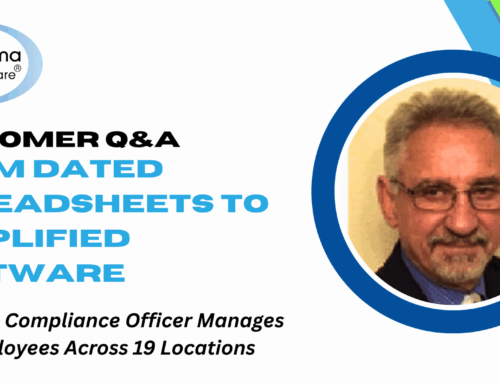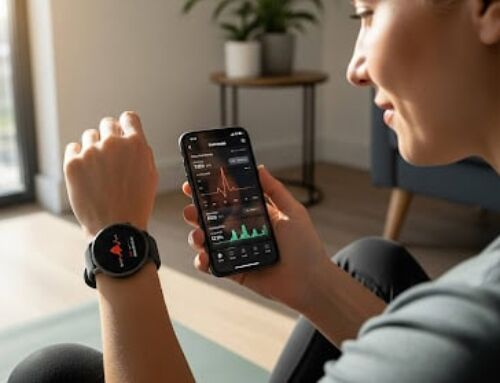
The healthcare industry has embraced some of the many changes to healthcare technology. But the benefits of convenience and quality care have been paired alongside growing threats to data privacy and security. Healthcare providers are regularly handling patients’ sensitive health information, and as the industry continues to advance its technology, the data becomes more vulnerable to theft or breach. HIPAA employee monitoring is an important feature of an effective HIPAA compliance program that can help mitigate these risks for employers looking to address HIPAA law. Continue reading for further HIPAA guidelines for employers.
HIPAA Law Guidelines for Employers
The Department of Health and Human Services (HHS) enacted the HIPAA Privacy Rule to set national standards for the protection of sensitive health information. The Privacy Rule requires appropriate safeguards to protect the privacy of protected health information (PHI) and it sets limits and conditions on the uses and disclosures of PHI without patient authorization. PHI is any demographic information that can be used to identify a patient, such as name, address, email, phone number, Social Security number, health records, and full facial photos, to name a few examples.
However, just because the Privacy Rule sets these standards, that doesn’t mean healthcare providers are protected from the risks of the digital age. HHS Office for Civil Rights (OCR) set an all-time record for HIPAA enforcement in 2018. OCR levied a total of $28.7 million in settlements and judgements in 2018 alone–part of a growing trend in HIPAA enforcement efforts. There were hundreds of data breaches that compromised millions of patient records, stemming from phishing attacks, ransomware, malware, and even insider threats.
Data Breaches on the Rise
And advances in technology are not the only potential threat to patients’ data. Many healthcare organizations are not addressing the full extent of their HIPAA regulatory requirements, and this problem is growing progressively worse. According to HIPAA Journal, the number of reported HIPAA data breaches has increased drastically from fewer than 50 in 2009 to over 365 in 2018.
Employers need to address HIPAA law guidelines to defend against this growing trend of healthcare data breaches. While it is important to protect against the risks associated with third-party vendors, a majority of data loss events are actually caused by insider threats. 58% of data loss events involve insiders, according to Verizon’s 2018 Protected Health Information Data Breach Report. The report states, “Healthcare is the only industry in which employees are the biggest threat to an organization.”
In order to address this problem, healthcare organizations must incorporate HIPAA employee monitoring measures into their HIPAA compliance program to protect their PHI and to maintain their compliance.
1) Employee monitoring prevents accidental and intentional data theft
The HIPAA Privacy Rule sets national standards for patients’ rights to PHI and it assures that individuals’ information is properly protected. The HIPAA Privacy Rule only applies to covered entities, such as health insurance providers, clearinghouses, and healthcare providers. Therefore, these organizations have a big responsibility to protect patient information, even against accidental data theft and disclosure, and failure can result in a costly fine. Healthcare organizations need to be more “hands-on” in order to prevent insiders from compromising patient data in violation of the HIPAA Privacy Rule.
HIPAA employee compliance monitoring allows employers to be involved in this process with insider threat detection controlling the capabilities afforded by AI and machine learning to determine which data is considered “normal” and “abnormal.” In other words, healthcare providers can have a full understanding of their employees’ data use norms and possible risks associated with those behaviors using features like rule-based risk analysis, IT forensics, and live history playback.
2) Limiting Data Misuse and HIPAA Minimum Necessary Rule
The HIPAA Security Rule also sets national standards for the secure maintenance, transmission, and handling of ePHI. The Security Rule applies to both covered entities and business associates because of the potential to share ePHI. The HIPAA Security Rule outlines standards for ensuring the confidentiality, integrity, and availability of ePHI, including administrative, physical, and technical safeguards that must be implemented by all healthcare organizations. HIPAA employee monitoring guidelines can pair these security safeguards with other standards outlined in HIPAA law.
HIPAA law also establishes the Minimum Necessary Rule. This rule states that employee access to PHI should be limited to the minimum necessary amount required to effectively perform their job.
By performing HIPAA employee monitoring and employee compliance tracking in tandem with the standards of the minimum necessary rule, healthcare providers can limit their exposure to PHI breaches and privacy incidents all while addressing HIPAA law.
3) IT forensics maintain the burden of proof
Healthcare organizations are required to report data breaches containing PHI or ePHI, regardless of the size or scope of the breach. If an organization is found non-compliant, they can be fined which is why healthcare providers need extensive documentation both to understand the data loss event and to hold perpetrators responsible.
Having effective HIPAA employee compliance monitoring should allow employers to fully analyze incidents by checking the company’s communication channel, examining who accessed the respective data, where and when it was accessed, and what they did with the information. Moreover, alerts can be used to demonstrate who is responsible for a given incident.
Addressing HIPAA Law Guidelines
If an organization comes up short in this regards, the consequences are not cheap. Fines for HIPAA violations can be as high as $50,000 per incident, which can quickly add up for large-scale data breaches. According to HIPAA Journal, “In addition to an increase in fines and settlements, the level of fines has also increased substantially. Multi-million-dollar fines for HIPAA violations are now the norm.”
It has become a crucial time for healthcare organizations to establish appropriate privacy and security guidelines to address the HIPAA minimum necessary rule and keep PHI safe. Giving healthcare organizations a way to address HIPAA law guidelines for employers is part of creating an effective HIPAA compliance solution.








